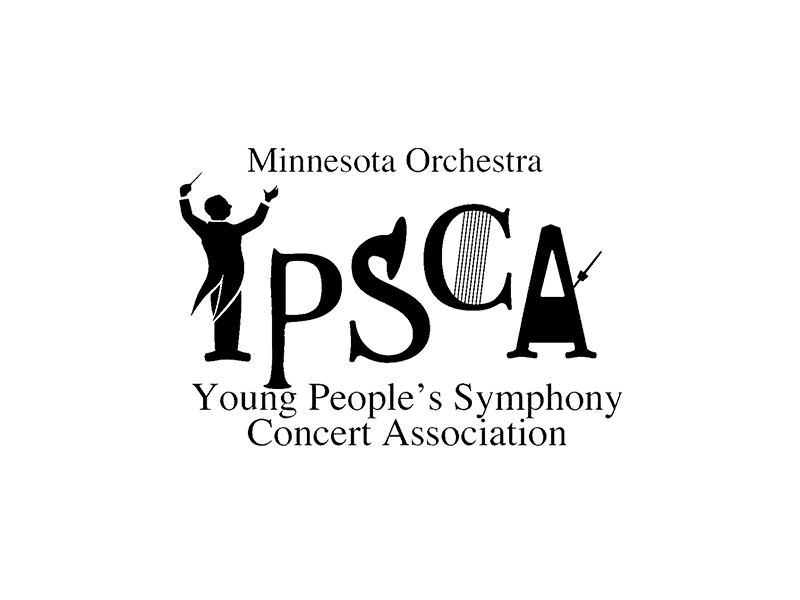
Musical Menagerie
Go on a musical journey to meet animals! Presented in partnership with the Minnesota Zoo and Twin Cities PBS (TPT), this Minnesota Orchestra concert for grades 1-6 presents a variety of composers and styles of music as well as unique film elements and guests from the Zoo. Accompanying the concert experience are activities from the Zoo and other partners, a music education curriculum, and instrument demonstrations.
About the Composers
Edvard Grieg
Edvard Grieg was not only a famous composer, but also a concert pianist. His first piano teacher was his mother, who taught him to play when he was six. Grieg was a champion of Norwegian culture, using Norwegian folk songs in his music and working with Norwegian writers and poets on plays and songs.
The Holberg Suite, written in 1884, is a suite of five movements written to celebrate the 200th anniversary of playwright Ludvig Holberg's birth. Since Holberg was from the 1700s, Grieg based the piece on dance forms from that era. Grieg originally wrote this piece for piano and later adapted it for string orchestra. The eighth-note, two sixteenth-note “skipping” pattern that runs throughout gives the Praeludium a high-energy feel that sets the stage for this concert.
-
BORN: June 15, 1843, Bergen, Norway
-
DEATH: September 4, 1907
Antonio Vivaldi
Antonio Vivaldi was a composer, violinist and devout Catholic priest. His father, who was a barber before becoming a professional violinist, taught Vivaldi to play the violin and then toured Venice playing the violin with his young son. He was ordained at age 25 and was soon nicknamed il Prete Rosso, "The Red Priest," because of his red hair. That same year Vivaldi became maestro di violino (master of violin) at an orphanage in Venice. Vivaldi’s output was enormous, writing more than 500 concertos, about 46 operas and a large body of sacred choral music, not to mention other works like sinfonias, sonatas and chamber music.
The Four Seasons is Vivaldi’s best-known work. This is a set of four concertos, each concerto having three movements. Each movement is associated with a sonnet that describes the musical picture being painted. He was one of the first composers to try and represent specific images with his music; in the first movement of Spring there are birds, the murmuring of streams and thunderstorms.
-
BORN: March 4, 1678, Venice, Italy
-
DEATH: July 28, 1741
Grace Williams
Grace Williams is generally regarded as Wales' most notable female composer, and the first British woman to score a feature film. As a girl, she learned piano and violin, playing piano trios with her father and her brother, and accompanying her father's choir. In 1926 she began attending the Royal College of Music in London, where she studied with Ralph Vaughan Williams. In 1932 Williams began teaching at Camden Girls' School and the Southlands College of Education. During World War II, the students were evacuated, and Williams began composing. In 1945, she returned to her hometown, remaining there for the rest of her life, dedicating herself full-time to composition.
Sea Sketches is a suite of five movements for string orchestra and dedicated to her parents. The last movement, Calm Sea in the Summer, evokes strong imagery by using slow, luscious harmonies to create a sense of calmness, swaying step-wise motion to give a sense of the sway of the sea, and the occasional upward leap like a wave coming up to the shore. It is a phenomenal example of musical imagery.
-
BORN: February 19, 1906, Barry, Wales
-
DEATH: February 10, 1977
Nikolai Rimsky-Korsakov
Nikolai Rimsky-Korsakov was a Russian composer famous for his orchestration (arranging music for an ensemble). His textbook on orchestration is still used by many colleges to this day. He was one of the “Mighty Five”—a group of five Russian composers who worked to combine traditional elements of Russian music with Western compositional style, often using Russian folk melodies. As a teacher and mentor, Rimsky-Korsakov worked with many young Russian composers including Igor Stravinsky.
Flight of the Bumblebee was composed for the opera The Tale of Tsar Saltan, based on a Russian fairy tale. Flight of the Bumblebee is part of Act 3 in the opera, when the Prince is turned into a bee so he can fly away to visit his father (the Tsar) without being noticed. Korsakov uses fast, chromatic patterns in the melody to sound like a bee buzzing around in the air.
-
BORN: March 18, 1844, Tikhvin, Russia
-
DEATH: June 21, 1908
Maurice Ravel
In the 1920s and '30s, Ravel was regarded as France's greatest living composer, developing a unique voice and incorporating elements of different genres and styles into his works. During World War I, Ravel tried to join the French Air Force but was rejected because of his age and a minor heart complaint. After several unsuccessful attempts to enlist, Ravel finally joined the Thirteenth Artillery Regiment as a lorry driver in March 1915. The war took a heavy toll on Ravel’s physical and emotional health.
Le Tombeau de Couperin is a suite, originally written for solo piano, based on traditional Baroque suites. Each movement is dedicated to a friend of Ravel’s who died in the war. Rigaudon is in memory of Pierre and Pascal Gaudin—two brothers and childhood friends of Ravel who were killed by the same shell. The movement is in ABA form, with a softer middle section. Instead of being mournful, this movement captures the bright youthful energy of the two brothers.
-
BORN: March 7, 1875, Ciboure, France
-
DEATH: December 28, 1937
Jack Stamp
Jack Stamp is currently serving as International Composer in Association to the world-renowned Grimethorpe Colliery Brass Band. He spent the prior three years as adjunct faculty at UW-River Falls. He is active as a guest conductor, clinician, adjudicator, and composer throughout North America and Great Britain. His compositions have been commissioned and performed by leading military and university bands across the United States.
Red Cedar Lake is in Wisconsin, and the piece Eagles on Red Cedar Lake was written for the Uptown Brass, whose members are Minnesota Orchestra musicians. Stamp takes advantage of the triumphant sound of the brass quintet to create a majestic soundscape. The opening theme is developed in different ways during this short piece that ends with bold chords and a driving rhythm in the tuba.
-
BORN: March 5, 1954, College Park, Maryland
Anthony DiLorenzo
Anthony DiLorenzo is an Emmy-winning composer, trumpet soloist and Grammy-nominated recording artist. His career began growing in popularity in the 1990s with his original compositions written for brass. In addition to DiLorenzo’s original works for the concert stage, his work in film and television spans 30 years, writing music for film trailers and themes for sports shows such as ABC network’s college football.
Since its premiere, Fire Dance has become part of the standard brass quintet repertoire used in competitions, festivals and brass workshops worldwide. The piece is a showcase of brass musicality and technique. Featuring many key changes and rhythmic variety, this piece is playful, menacing and wild.
-
BORN: August 8, 1967, Stoughton, Massachusetts
Steve Reich
Steve Reich is an American composer and major figure in minimalist music. By using limited musical material—such as repetitive patterns or pulses, steady drones or constant harmony—minimalist music attempts to get the listener to focus on the activity of listening itself and on the internal processes of the music.
Duet for two violins features two violins passing short melodic segments back and forth, while a body of strings drones and pulses below; sometimes they finish each other's phrases or sing out in a quick call-and-response, while other times they overlap complementing each other.
-
BORN: October 3, 1936, New York, New York
Coleridge-Taylor Perkinson
Coleridge-Taylor Perkinson, named after composer Samuel Coleridge-Taylor, was born in Manhattan. His mother was a piano teacher, church organist, and director of a theater company. Perkinson attended the Manhattan School of Music and later taught at Brooklyn College. Perkinson wrote a great deal of classical music but was equally well-versed in jazz and popular music. Alongside composing, Perkinson was also a conductor, cofounding the Symphony of the New World in New York in 1965 and later becoming its Music Director. Perkinson's music has a blend of Baroque counterpoint, American Romanticism, and other styles such as the blues and spirituals.
Perkinson wrote his Sinfonietta No. 1 for Strings in 1954, when he was 22, but it was not performed until 1966. The Sinfonietta shows influence from many of the styles mentioned earlier, particularly the counterpoint of J.S. Bach and American Romanticism. It also features many characteristics that Perkinson would develop throughout his career, including dissonance and metrical ambiguity.
-
BORN: June 14, 1932, New York, New York
-
DEATH: March 9, 2004
Guide to the Orchestra
See instruments in action, as demonstrated by Minnesota Orchestra musicians.


The Zoo Friends Mural with Mentoring Peace Through Art
Create your very own Zoo Friends for a mural project with artist Jimmy Longoria.

Become a Swan
with Ballet Co.LaboratoryLearn to make elegant "swan arms" from the Dying Swan variation with Ballet Co.Laboratory.

Concert Curriculum
Download our concert guide designed for use in the classroom—including activities, flashcards, and more.
Sponsored By
Thomas* and Mary Lou Detwiler
Mary Ann Feldman Music Education Fund
Corporate Sponsors





